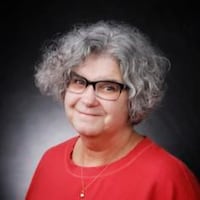But prosecutors say Singh was handcuffed for about 10 minutes for officer safety and as a witness when they found him bloody in the stairwell of the Wyndtree Drive apartment building on April 28, 2019. Then he was taken unrestrained through the front door of the West Chester Police Department and questioned, not interrogated, prosecutors and police say.
Through body camera video as officers approached Singh in the stairwell of complex, Judge Greg Howard got a glimpse of both officers’ and Singh’s words on March 9 during the first half of the hearing.
“What happened?” West Chester officers ask Singh.
“I don’t know, everybody bleeding,” Singh answers while lying on his belly.
His bloody hands are cuffed behind his back in the video.
Singh, 37, is charged with four counts of aggravated murder. With specifications of using a firearm and killing two or more persons, Singh faces the death penalty if convicted. He is being held in the Butler County Jail without bond, and his trial is scheduled to begin Sept 21.
Singh is accused of killing his wife, Shalinderjit Kaur, 39; his in-laws, Hakikat Singh Pannag, 59, and Parmjit Kaur, 62; and his aunt by marriage, Amarjit Kaur, 58, at their apartment. All died of gunshot wounds.
Defense attorneys Charles H. and Charles M. Rittgers and Neal Schuett argued Singh’s constitutional rights were violated during a five-hour interrogation by West Chester police, so they want evidence gathered during interrogation suppressed. Prosecutors say Singh’s rights were not violated.
A nearly two-hour interview of Singh by police is expected to be played during Tuesday’s hearing. Singh was permitted to leave after the questioning, but he was first read his Miranda Rights and detained so officers could get a warrant to swab his hands for gunshot residue.
Singh told police he wanted to go home and he did not want to consent to gunshot residue testing.
The defense team is also requested an expert from the Ohio Bureau of Criminal Investigation appear in court for a pre-trial hearing with his case file so that he can be questioned about the conclusions reached when testing Singh’s clothing he wore on the night his family was killed.
“(Todd) Fortner will likely testify that while examining Mr. Singh’s clothes, he found blood spatter on certain items. His findings as well as all the facts and data he relied upon, will be in the case file he created. Because of the important nature of Mr. Fortner’s findings and testimony, this court should require him to bring his entire file,” Schuett wrote in the motion.
Specifically, the defense wants to be provided with any correspondence Fortner had with law enforcement and prosecutors as well as others in completing his examination of the clothing.
During a hearing earlier this month, Charles M. Rittgers referenced last year’s trial of Brooke Skylar Richardson, a Carlisle teen found not guilty of killing her infant who she said was stillborn.
The infant girl was buried in the backyard for weeks before a visit by Richardson to a doctor resulted in the discovery. Early on in the investigation a forensic anthropologist indicated to police and prosecutors the baby’s bones were burned. She later recanted that finding.
Rittgers said the defense has the right to question the expert about any bias that expert many have formed during communication with others.
The state is calling this expert for a reason, because they think he is important,” the defense attorney argued. “There is an issue in this case with this expert … splatter verses soak. Did the expert talk to police and prosecutors before forming an opinion?”
Prosecutors argued the motion was a “fishing expedition” and the motion “breathtakingly broad,” pointing out the defense has been provided Fortner’s 10-page report and other materials from BCI and is attempting to bypass the discovery process.
“The facts in this case is clear, four individuals were shot and killed. There is no dispute into the mode and manner of death in this case,” said assistant prosecutor Jon Marshall.
In the Richardson case, because of the condition of the baby’s body, neither the cause of death or how she died could not be determined by coroners.
Judge Greg Howard has not issued an opinion on the motion, but said during the hearing that the subpoena is very broad.
“This is not a situation were the defendant was found elsewhere and his clothing was tested to tie him to the scene,” Howard said.
The judge said the defense can question Fortner at trial and he “is free to talk to whoever he wants to talk to,” including the defense.
About the Author
